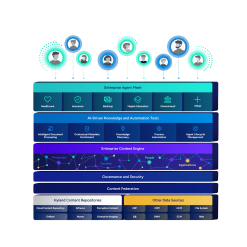Unsurprisingly, there has been an important pivot in looking toward supply chain technology to resolve many of these challenges, whether they be moves to:
- Localize supply chains
- More accurately forecast inventories
- Retain staff and keep returns under control
Supply chain technology can help bring about much-needed change, but there are no silver bullets.
Data is the Key to Modernization Success
Even with advances in supply chain management and experiments with Internet of Things (IoT) devices, much remains undone and unresolved, as good technology depends on good data. Without good data, the technology can do very little.
And though we have enormous amounts of data flowing through the chains, too much of it is unreliable or inaccurate. For supply chain executives, the lure of technology is strong, and you should embrace it.
Still, you’ll need to work hard and face harsh realities if you are to leverage emerging technologies in supply chain management successfully.
Accurate data drives accurate results
The first reality is that all technology assumes that your data is accurate; in fact, technology has no way of knowing if the information has been misfiled or keyed incorrectly. For example, complex bills of lading (BOLs) or manifests often contain multiple minor errors (dates, quantities, freight class, etc.). These errors can be compounded further by inaccurate manual key entry work.
Such errors cause numerous disputes, delayed payment cycles, and even returns.
Similarly, multiple copies of the same document in the hands of various third parties across the chain can introduce further errors and bottlenecks. If not identified immediately, these simple errors and problems become significant issues resulting in acrimony, inaccurate forecasts, late deliveries and unpaid bills.
Hence, it would be best to consider investing first in automating standard document processes to reduce manual key entry work and improve its accuracy. Supply chain technologies such as robotic process automation (RPA), intelligent capture and automated data extraction can deliver a fast return on your investment for this challenge by immediately enhancing process efficiencies and providing you with the accurate and timely data needed to drive more advanced technology improvements.
Role of Technology in Supply Chain Management
Let’s take a step back and clarify why such overlooked activities are critical to success.
In technical terms, technologies like artificial intelligence (AI) and business applications like control towers rely extensively on structured data. Structured data is the kind of data that an IoT device produces and stores in neat columns in a database.
However, the context for that structured information is contained in “unstructured” data: documents, forms, emails, communications, etc. It’s in these unstructured, and sometimes uncaptured, data points that errors are so often introduced or wholly ignored through manual processes.
So, while building a dashboard to see the current state of your supply chain is relatively straightforward, it brings limited value because at best, even assuming all the structured data the dashboard/control tower accesses is accurate, the dashboard only shows you symptoms such as delays and bottlenecks. It cannot show you the causes of those delays and bottlenecks, which may stem from errors in uncaptured, unstructured data.












